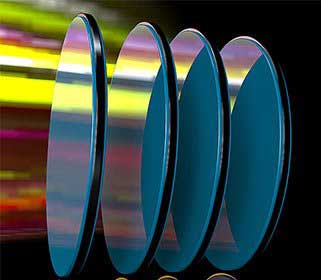Raman spectroscopy is a robust quantitative and qualitative spectroscopic technique for analysing molecular or material samples. Raman spectroscopy’s sensitivity to the vibrational structure of a sample makes it integral for identification.
Each molecule or material has a unique combination of chemical bonds, and the frequency at which these bonds vibrate depends on the local chemical environment. This is what gives each molecule an identifiable Raman ‘fingerprint’. The intensity of the observed transitions can also be used to obtain quantitative information from a Raman experiment. A typical Raman spectroscopy instrument will consist of the light source, beam handling optics and a detector. 
Understanding Raman Signals
The most common Raman spectroscopy type involves observing molecular vibrations by using light to excite a vibrational transition in the molecule. Some photons will be elastically or inelastically scattered when light irradiates a sample.
Elastic scattering involves no transfer of energy between the incident photon and the sample, so the detected light will be of the same wavelength as the incident light. In an inelastic scattering process, there is a transfer of energy between the sample and the photon.
In Raman spectroscopy, a photon that has lost energy due to sample interaction is known as Stokes scattering, whereas light that gained energy is known as anti-Stokes. The loss or gain of energy in the Stokes or anti-Stokes spectrum is proportional to the vibrational structure of the molecule. It is what can be used for species identification. Typically, the Stokes lines are more intense than the anti-Stokes lines as the Stokes lines correspond to interactions with molecules in the ground state. Most experiments under steady-state, room temperature conditions, will have a much greater proportion of molecules in the ground state.1
Raman Spectroscopy Principles & Instrumentation
One of the challenges in Raman spectroscopy measurements is that the Raman process is not the only process that can be triggered by light. If a molecule is electronically excited by the light source, it may fluoresce, where energetic relaxation occurs by the emission of photons.
In Raman spectroscopy, the fluorescence background is a significant problem as these background signals tend to be very broad in energy and more intense than the inelastically scattered Raman signals. Raman signals are inherently weak, and their intensity scales with 1/λ4 – where λ is the excitation wavelength used to trigger the Raman process.
Using shorter wavelength excitation sources in Raman spectroscopy, therefore, enhances the intensity of the Raman but also increases the probability there will be sufficient energy to excite an electronic transition in the sample and trigger a fluorescence process. Careful spectrometer design for Raman spectroscopy to suppress these competing contributions is a key part of exploiting the full power of Raman spectroscopy for sample identification.
Longer wavelength excitation and the use of more sensitive Fourier Transform Raman spectroscopy instruments have become popular, as have surface-enhanced techniques to increase Raman signal levels. For Raman spectroscopy, optics such as lenses are used to focus beams and increase the local excitation energy and high transmission optics to ensure low losses for signal collection.
Where Raman Filters Factor
Another critical method of suppressing unwanted signals, be they residual light from the excitation source or unwanted scattering, is optical filters. The right filter choice in Raman spectroscopy can help improve signal-to-noise, remove unwanted backgrounds and even help improve instrument resolution.
High-performance filters are vital to achieving the right performance in Raman spectroscopy instruments, particularly for challenging samples with low signal levels or where very high resolution is needed. Find out how experts in filter design like Iridian, can help improve your Raman spectroscopy instruments today.
References and Further Reading
- Kauffmann, T. H., Kokanyan, N., & Fontana, M. D. (2018). Use of Stokes and anti‐Stokes Raman scattering for new applications. Journal of Raman Spectroscopy, 50, 418–424. https://doi/10.1002/jrs.5523
